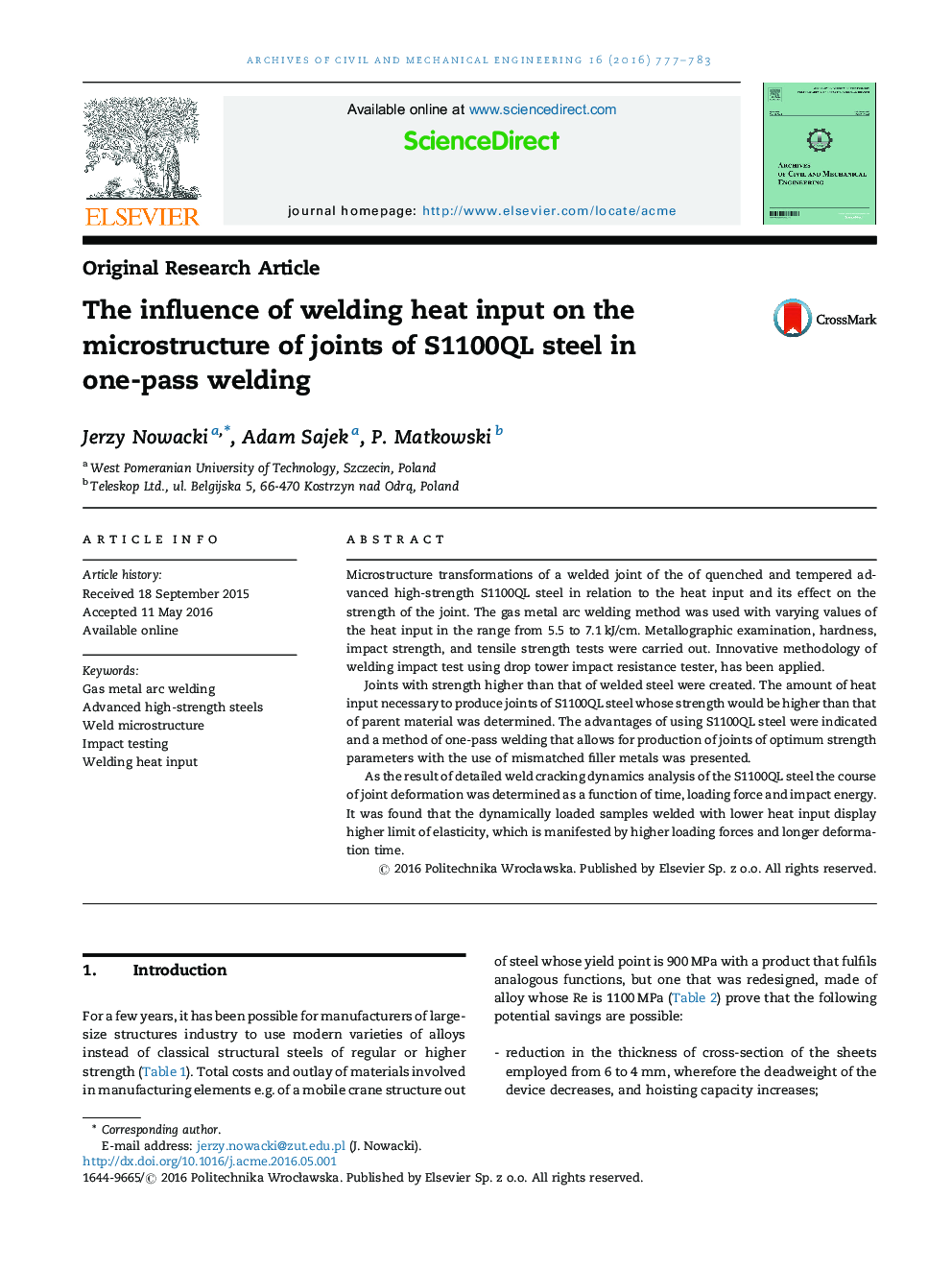| Article ID | Journal | Published Year | Pages | File Type |
|---|---|---|---|---|
| 245511 | Archives of Civil and Mechanical Engineering | 2016 | 7 Pages |
Microstructure transformations of a welded joint of the of quenched and tempered advanced high-strength S1100QL steel in relation to the heat input and its effect on the strength of the joint. The gas metal arc welding method was used with varying values of the heat input in the range from 5.5 to 7.1 kJ/cm. Metallographic examination, hardness, impact strength, and tensile strength tests were carried out. Innovative methodology of welding impact test using drop tower impact resistance tester, has been applied.Joints with strength higher than that of welded steel were created. The amount of heat input necessary to produce joints of S1100QL steel whose strength would be higher than that of parent material was determined. The advantages of using S1100QL steel were indicated and a method of one-pass welding that allows for production of joints of optimum strength parameters with the use of mismatched filler metals was presented.As the result of detailed weld cracking dynamics analysis of the S1100QL steel the course of joint deformation was determined as a function of time, loading force and impact energy. It was found that the dynamically loaded samples welded with lower heat input display higher limit of elasticity, which is manifested by higher loading forces and longer deformation time.
